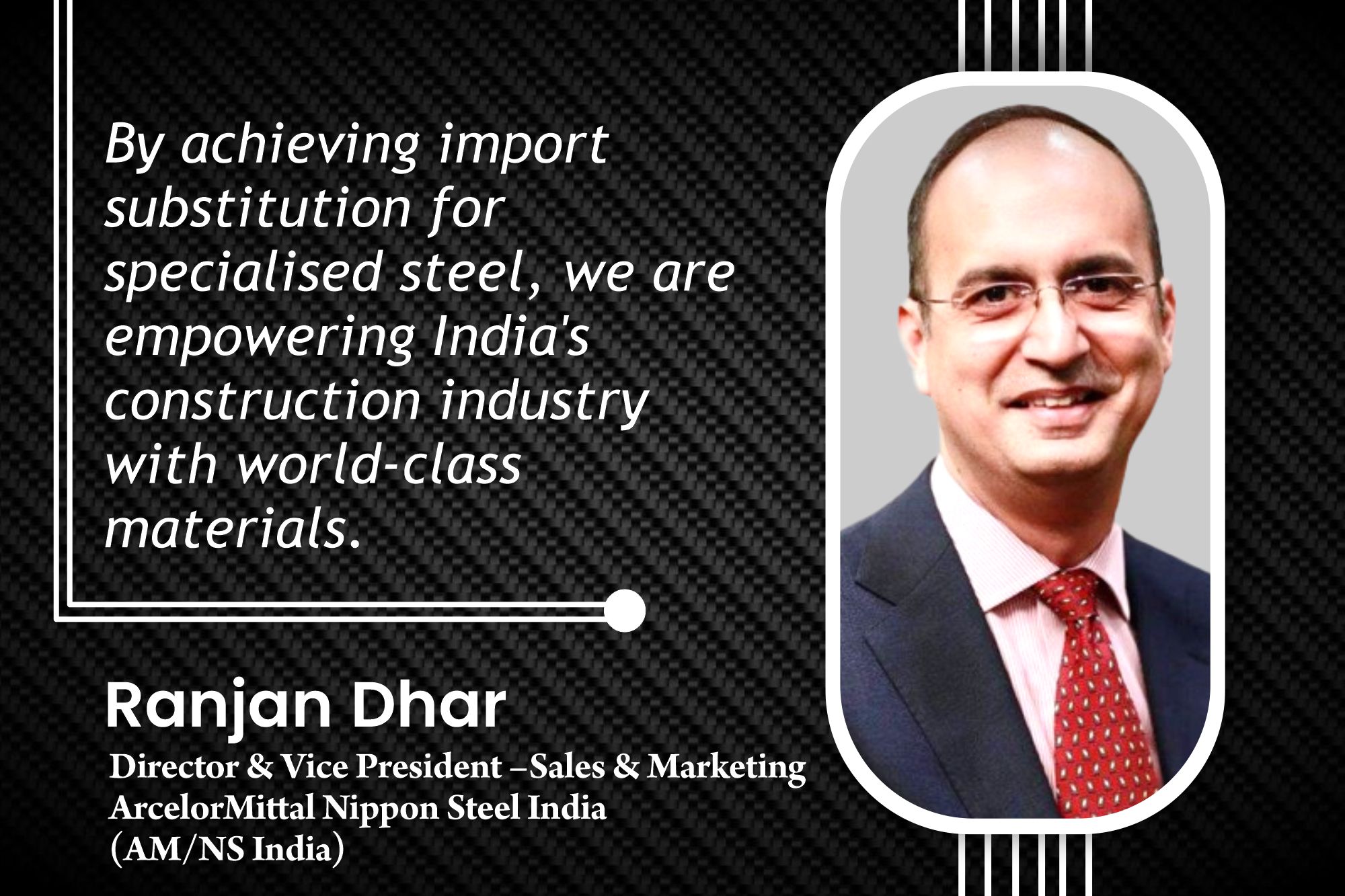Digital tools will help construction firms in improving business value
By Edit Team | October 20, 2020 7:20 pm SHARE

The adoption of constructible BIM, mixed reality, robotics, cloud computing and Internet of Things (IoT) will drive a massive change in how the construction firms plan and execute their projects going forward says Jayant Keswani, Director Marketing, India & Middle East, Trimble Buildings.
How is the construction industry coping with the ongoing global pandemic?
The global infrastructure and construction industry has been hit hard by the Covid-19 pandemic. Recently, UK-based Fitch Solutions forecasted a 0.9 per cent y-o-y global growth rate for the construction sector in 2020’ revising its earlier forecast of 3.5 per cent y-o-y growth, made before the pandemic. Around the world, businesses and governments are dealing with the still-unfolding crisis with no end in sight. They are racing to craft and execute appropriate responses, not only to secure safe health outcomes for all but also to ensure that lifestyles and livelihoods are protected.
For the next few years, we will still be coping with the global fallouts of this pandemic. However, the forecasts for the upcoming decade seem heartening. Analysts at Oxford Economics said that the construction sector is anticipated to grow by nearly 35 per cent by 2030, despite the corona-virus fallout.
In India too, construction firms are now displaying great agility and dynamism in responding to the ‘new normal’ of the lockdown economy, with the accompanying rise in remote working and restrictions on travel, by embracing digitalized processes and workflows. In the past few months, we have seen a marked increase in demand for different technologies and cloud-based solutions. There has been increased adoption of modern construction technology and cloud-based tools, which greatly aid in remote working and meet its deadlines while reducing cost and wastage, once projects resume.
The pandemic is here to stay, and in our view, the infrastructure construction industry needs to aggressively look for ways to retain their pre lockdown productivity, or perhaps increase their output while following the social distancing norms. We believe that a thorough digitalization of construction industry workflows and the deployment of cutting-edge technologies like constructible BIM, mixed reality, IoT, AI and robotics can be powerful enablers of rapid gains in productivity, so much to offset and overcome the inevitable losses on account of the social distancing norms.
How do you see the industry transforming in the coming years?
When we look at the next few years, we are looking to adapt to the new normal induced by the pandemic. The industry now has to work in terms of social distancing on site and pre-emptive medical health checks for labour before they even get into the on-site situation. What we are seeing today is that businesses have started prioritizing worksite and workforce safety and are optimizing construction management.
In addition to this, to cope up with the recent project delays and losses, construction companies are now actively looking towards smart and sustainable tech solutions to optimize the entire design-build-operate lifecycles. For the construction industry, operational efficiencies remain the core promise of digitalization. Different research has established that digital transformation has the potential to cover the all-time pain points of the industry like unproductive sites, time management, safety, staff acquisition, and costs of project management.
Using technologies like constructible Building Information Modeling (BIM) and cloud-based collaboration tools, the engineering and construction companies can deliver infrastructure or real estate projects on time and within budgets – resulting in better margins and profitability. Further, the industry will see the application of pre-engineered and precast construction methods which has the capability of reducing project delivery time with lesser manpower and lifecycle costs. We believe that as revenues and profitability concerns grow bigger as a result of Covid-19 induced lockdown, construction players will hasten to adopt these tools for business value, paving the way for rapid digitalization of the industry.
What are the key disruptive technologies that will shape the world beyond 2020?
The adoption of modern technologies and construction processes such as Constructible BIM, mixed reality, robotics, cloud computing and Internet of Things (IoT) will drive a massive change in how the construction firms plan and execute their projects going forward. While the use of BIM and data analytics is now widespread among several large construction companies, other emerging technologies are now starting to have an impact on the sector, and it is the early adopters who are going to race ahead of the competition. According to KPMG, 70 per cent of construction companies believe that those who do not adopt digital tools will go out of business.
With the advent of industry 4.0, we are at the cusp of some exciting times. The world is now preparing for 5G rollout, promising much faster and reliable connections. Going forward, construction design using artificial intelligence (AI) and constructible BIM will be even more efficient as 5G or WiFi networks will allow everyone involved on a construction project to rapidly access all ongoing project information on a single design platform, and in real-time. 5G also paves the way for further development and adoption of robotics, AI, and the Internet of Things.
It is estimated that the use of Robotics, AI, and IoT Things can reduce building costs by up to 20 per cent; directly improving the industry’s profitability. The business benefits will also mean cheaper construction and will therefore benefit end-users and consumers through more affordable housing and commercial real estate.
What are some of the technology trends we are likely to see in India in the coming decade?
One of the trends that we will see is the increased use of Artificial Intelligence (AI) in construction. According to a Mckinsey report, AI and Machine Learning (ML) will have an overarching role to play in the way the construction industry operates. Building Information Modeling (BIM) will further experience a higher rate of adoption. We are also likely to see increased adoption of cloud-based collaboration tools, which are a boon for remote working and ensure worker and worksite safety while ensuring that the project work goes on.
A vast majority of construction projects are still highly fragmented with different teams working in silos, often with little or no synchronization. Cloud-based collaboration solutions help address these precise problems. Connected job sites use the cloud to make the information about almost every aspect of construction available to all the relevant parties, regardless of whether those parties are onsite or somewhere else. And finally, the coming years will see the arrival of robots on project sites. Robots can aid with recurrent tasks while reducing dependence on human intervention. Robots already play a key role in challenging work environments like mines and tunnelling, where work has to be carried out in confined spaces and extreme weather conditions.
Cookie Consent
We use cookies to personalize your experience. By continuing to visit this website you agree to our Terms & Conditions, Privacy Policy and Cookie Policy.








































































